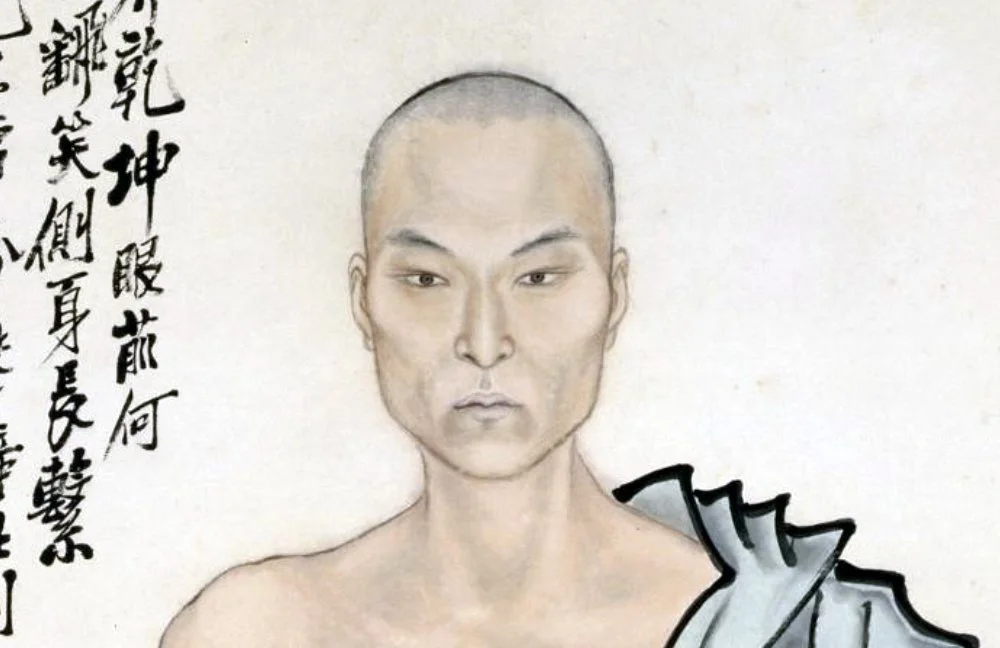Spirits In The Material World
Detail from Ren Xiong's "Self Portrait", circa 1850.Throughout the [art] history of world there have been many artworks created during times of civil unrest. Out of the many, one country in particular has an extensive repertoire of works that were created during civil unrest; An artistic tradition of societal critique, be it politically, economically, or religiously. Chinese artists named “Literati” were scholars who were trained in calligraphy, poetry, painting, and [Chinese] cultural history. They denounced technical ‘professionalism’ in painting, with a preference toward a more self expressive mode of painting. I could argue the Chinese created abstract expressionism centuries before the Americans post-WWII, but that debate is for another time. The topic here is isolation, uncertainty, confusion, division, tradition, and dissidence.
China’s main religions/spiritual beliefs for centuries has been Confucianism, Taoism, and Buddhism. The literati were usually Confucian or Taoist. These men would often slip away from the city into the mountains towards complete isolation with the intention of painting nature, and to reflect on their view of civil society, or lack of. The literati tradition continued for centuries; Different styles and techniques developed, but the concept of an expressive visual and written commentary continued.
Su Shi (Dongpo), "Wood and Rock", Song Dynasty.Wood and Rock by Su Shi (Dongpo) is an example of traditional, heavily expressive literati painting. Expressive, dynamic, literal, abstract. Natural, yet irregular; Taoist concepts at hand.
One literati painting I wanted to highlight amongst the many, due to its brilliance and deviance from tradition, is Ren Xiong’s Self Portrait painted around 1850. Mid 19th century Shanghai was a very agitated city. The port city was recovering from the first Opium War and was about to enter a civil war. The Taiping Civil War was a religious and cultural civil war that raged on for more than ten years throughout China. Almost all aspects of China’s society were affected, some endangered of becoming totally destroyed. Literati-scholarly painters were one of the many groups at risk of becoming wiped out due to their very different spiritual and cultural traditions to that of the opposing side, the God loving/fearing Taiping Heavenly Kingdom. Ren Xiong joined in the fight to protect the artistic tradition of the literati against the Heavenly Kingdom.
Ren Xiong, Self Portrait, circa 1850.
While the self portrait follows certain literati traditions, it breaks preconceived self portraiture in China. Created during his enrollment to fight in the civil war, Ren Xiong is isolated against an empty, colorless background. This was a stark artistic choice. Portraits in China, previous to Ren Xiong’s, usually contained an aspect of nature or a decorative motif, but Ren, the only subject, is intensely looking out toward the viewer in a bold, serious manner. What is really interesting is the contrast of his clothing compared to that of his flesh. Ren depicted himself naturalistically, while his clothing is outlined boldly in a calligraphic, aggressive, kinetic manner. His body is partially exposed, while his robes, pants, and shoes are overly animated. The juxtaposition of these very different color and line qualities are a commentary on the past and the future, given the outcome of the present. His thoughts on the present is expressed in the poem aside. Here is an excerpt from the poem-
“With the world in turmoil, what lies ahead of me? I smile and bow and go around flattering people in hope of making connections; but what do I know of affairs? In the great confusion, what is there to hold on to and rely on? How easy it is merely to chat about this!”
Ren Xiong
It is amazing how applicable this section of the poem is to the feelings of many people today. The simplicity of isolation can be very complex and everlasting.
V.N


